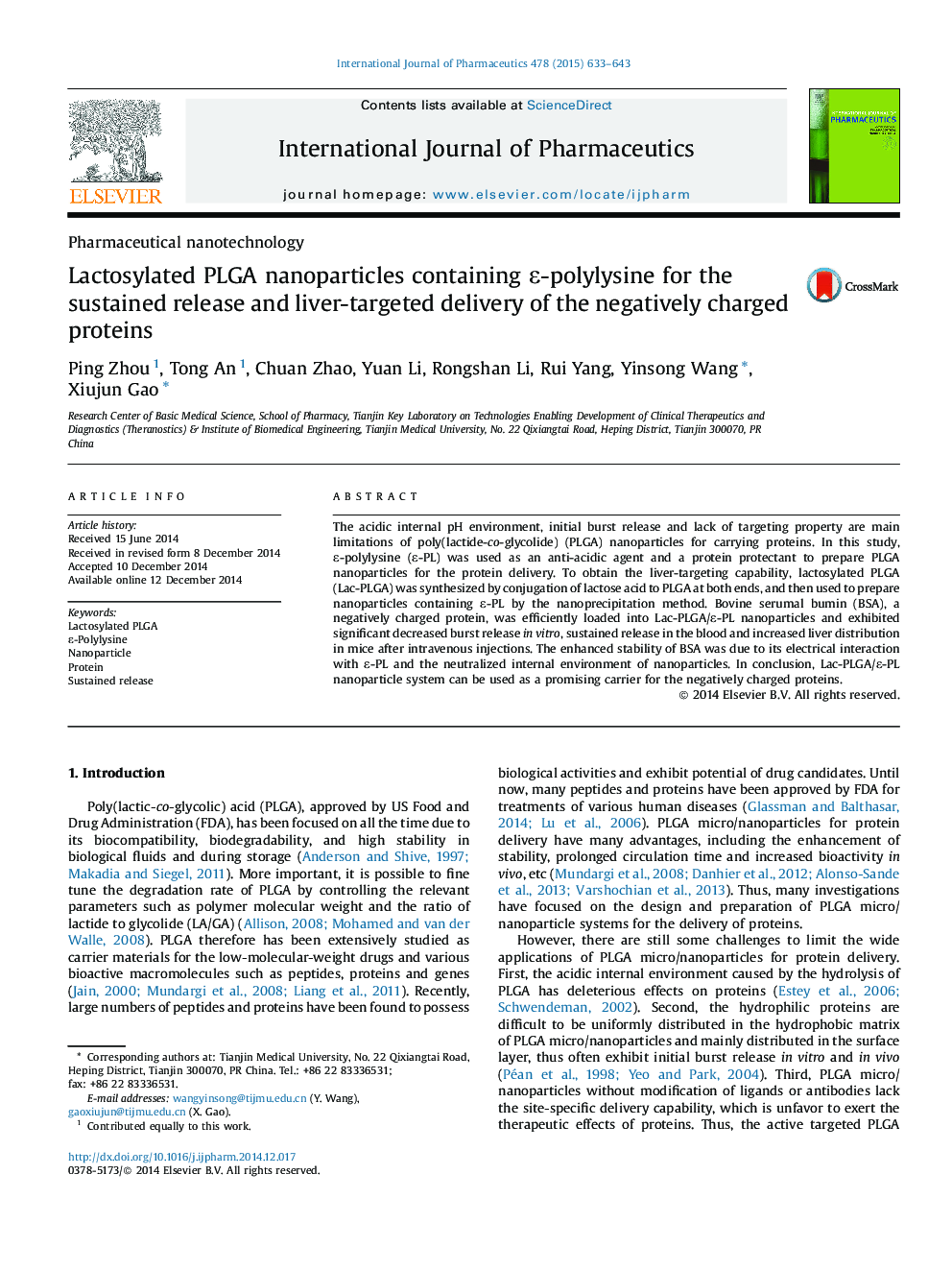| Article ID | Journal | Published Year | Pages | File Type |
|---|---|---|---|---|
| 2501774 | International Journal of Pharmaceutics | 2015 | 11 Pages |
The acidic internal pH environment, initial burst release and lack of targeting property are main limitations of poly(lactide-co-glycolide) (PLGA) nanoparticles for carrying proteins. In this study, ϵ-polylysine (ϵ-PL) was used as an anti-acidic agent and a protein protectant to prepare PLGA nanoparticles for the protein delivery. To obtain the liver-targeting capability, lactosylated PLGA (Lac-PLGA) was synthesized by conjugation of lactose acid to PLGA at both ends, and then used to prepare nanoparticles containing ϵ-PL by the nanoprecipitation method. Bovine serumal bumin (BSA), a negatively charged protein, was efficiently loaded into Lac-PLGA/ϵ-PL nanoparticles and exhibited significant decreased burst release in vitro, sustained release in the blood and increased liver distribution in mice after intravenous injections. The enhanced stability of BSA was due to its electrical interaction with ϵ-PL and the neutralized internal environment of nanoparticles. In conclusion, Lac-PLGA/ϵ-PL nanoparticle system can be used as a promising carrier for the negatively charged proteins.
Graphical abstractFigure optionsDownload full-size imageDownload high-quality image (121 K)Download as PowerPoint slide
